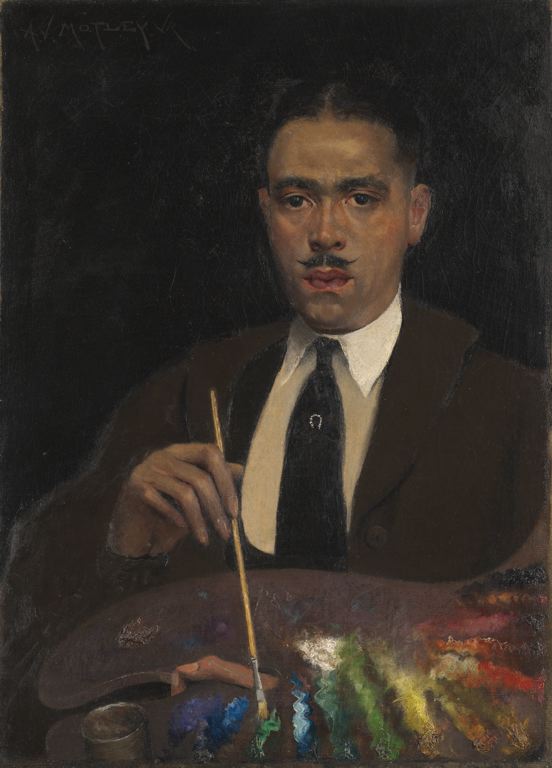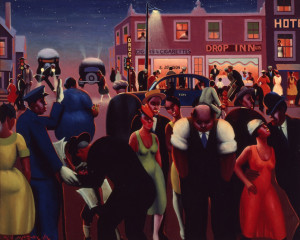
Till February 1 in LACMA Los Angeles
Black Belt, 1934.
About:
Archibald Motley: Jazz Age Modernist presents a full-scale survey of one the most important artists of the Harlem Renaissance, featuring the painter’s visual examination of African American culture during the Jazz Age. The exhibition covers Motley’s entire career, including periods in Chicago, Paris, and Mexico. Motley received his formal training at the School of the Art Institute of Chicago, and went on to create strong and somewhat solemn portraits of his community, as well as vividly hued, lively scenes of crowded dancehalls that reflect the colorful spirit of the Harlem Renaissance. The exhibition features a number of paintings depicting the black communities of Chicago and Paris just before and after the Great Depression, and concludes with introspective moments of quotidian life in Mexico, made during the artist’s travels during the 1950s. (press release)
 Barbecue, 1934.
Barbecue, 1934.
“Motley’s paintings literally move, capturing the mobility and movement and aspirations of his time,” said Davarian L. Baldwin, a professor at Trinity College in Connecticut whose first book used a Motley painting for its cover. “They have a lot of fantasy and ambition, a lot more surreal than other painters’ social realism. A lot of other African-American painters were doing more ‘upstanding’ images, trying to uphold a sense of dignity by placing black history within epic shorelines. But Motley was painting these down and dirty night scenes.”
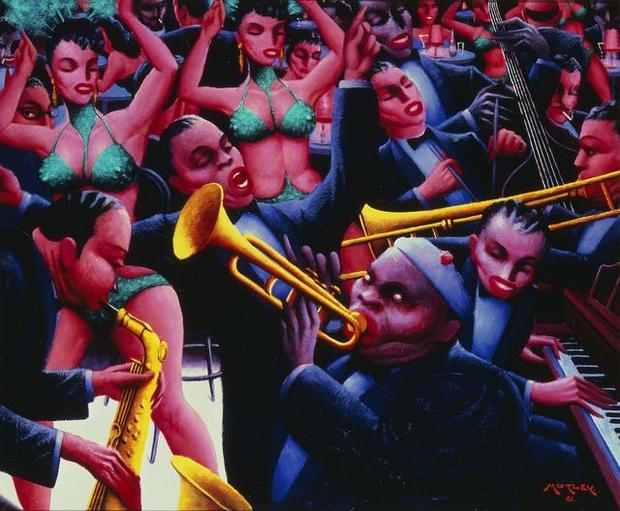 Hot Rhythme, 1961.
Hot Rhythme, 1961.
As provocative as they were for their time, Motley’s paintings are also elegantly rendered and beautiful to look at. Motley, who was 90 when he died in 1981, was one of the most important black artists of the 20th century. In 1928, he was one of the first African-American artists to win a prestigious Guggenheim Fellowship, using it to spend an expatriate year abroad painting in Paris (the “Jazz Age Modernist” painting “Blues” is from this period).
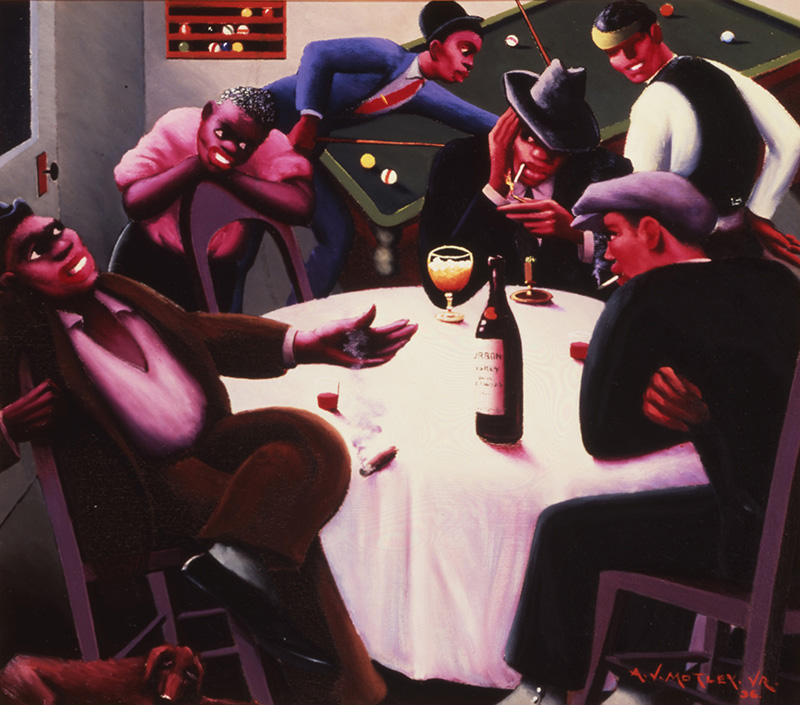 The Liar, 1935.
The Liar, 1935.
But the city most linked to Motley is Chicago, where he documented nightlife in the Southside district known as “Bronzeville.” Up and down “The Stroll,” a strip of nightclubs and shops, crowds bustled during the 1930s and ’40s. Motley observed and painted the scenes in sharp-angled, neon shades of hyper-realism. Even though the district Motley depicted is no more, torn down in “urban renewal” projects during the 1950s and ’60s, the paintings still look as fresh today as when paint was hitting canva s (fragment from article by David Menconi in the New Observer February 1, 2014)
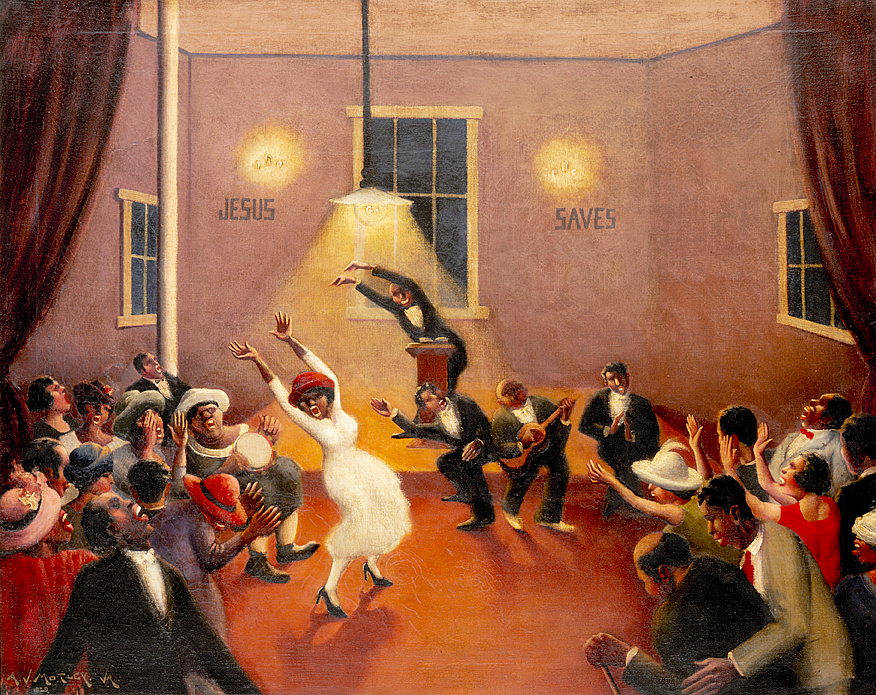 Tongues, 1929.
Tongues, 1929.

